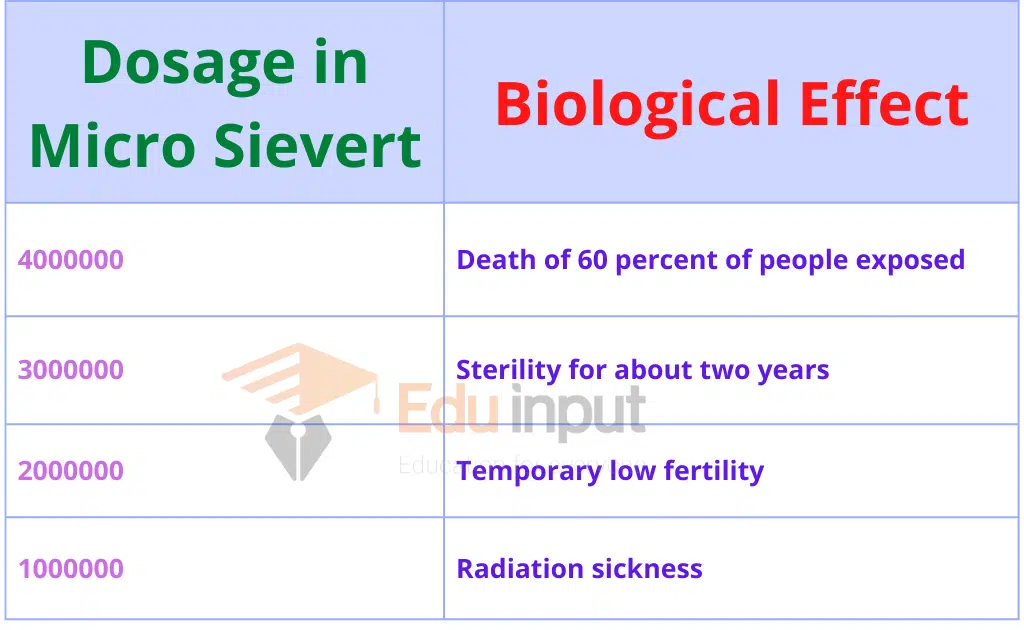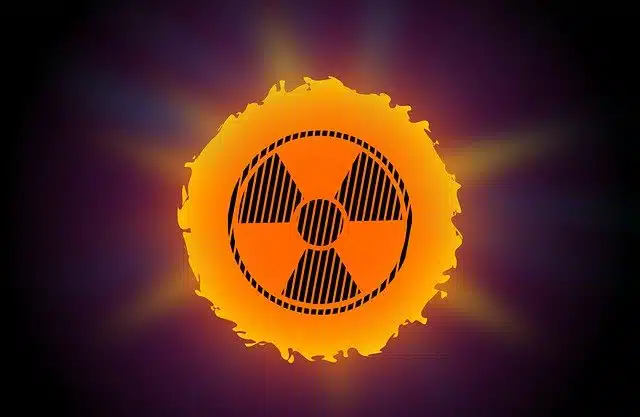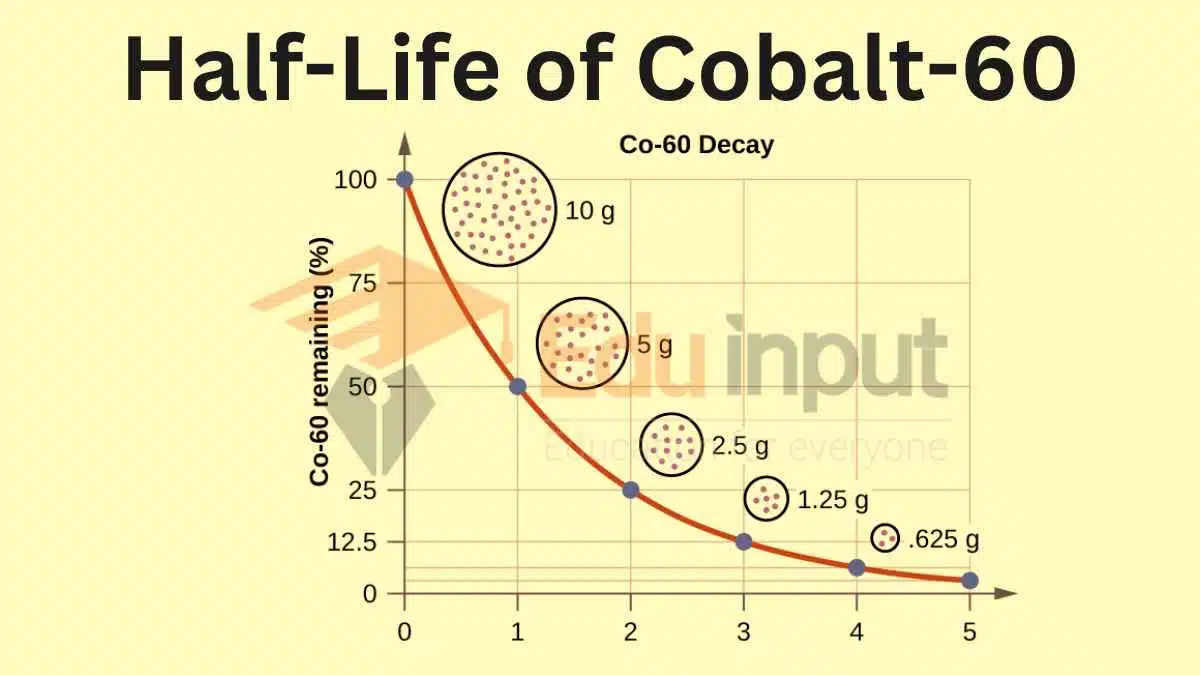Biological Effect of Radiation | Equivalent Dose of Radiation
The biological effect of radiation has two mechanisms. Radiations affect in a direct or indirect way. The biological effect of radiation exposure may cause somatic damage or genetic damage.
The subsequent biological effect of radiation can be traced back to the interaction of radiation with matter. There is a lot of uses of radiation but there is also some biological effect of these radiations.
The effects of radiation can be studied with help of some of the units of radiation.
Strength of Radiation:
The strength of the radiation source is indicated by its activity measured in Becquerel (Bq). One Becquerel is one disintegration per second.
A larger unit is curie (Ci) which equals 3.7 x 1010 disintegrations per second.
Biological Effect of radiation:
The effect of radiation on a body absorbing it relates to a quantity called absorbed dose D defined as the energy E absorbed from ionizing radiation per unit mass m of the absorbing body.
Its SI unit is gray (Gy) defined as one joule per kilogram.
1Gy 1=1Jkg-1
An old unit is a rad (radiation absorbed dose).
1 rad =0.01 Gy
Equivalent Dose of radiation
Equal doses of different radiations do not produce the same biological effect. For the same absorbed dose, alpha particles are 20 times more damaging than X-rays. We can measure the amount of absorbed radiation by radiation detectors.
The effect also depends on the part of the body absorbing the radiation.
Examples of the biological effect of radiation
Neutrons are particularly more damaging to the eyes than other parts of the body.
To allow this, the absorbed dose is multiplied by a quality factor known as relative effect biological effectiveness (RBE).
The equivalent dose (De) of any absorbed radiation is defined as the product of the absorbed dose and RBE of the kind of radiation being absorbed
De =DxRBE
The SI unit of equivalent dose is the sievert (Sv)
1 Sv = 1 Gy x RBE
In an old unit, the rem is equal to 0.01 Sv. 1 rem = 0.01 Sv The background radiation, to which we are exposed, on average, is 2mSv per year. Doses of 3 Sy will cause radiation burns to the skin.

For workers in nuclear facilities or mines, a weekly dose of 1 mSv is normally considered safe.
The damage from alpha-particles is small unless the source enters the body. Alpha and beta particles can cause redness and sores on the skin.
Some other low-level radiation effects are
- Loss of hair
- Ulceration
- Stiffening of the lungs
- A drop in the white blood cells is followed by a sickness pattern of diarrhea
- Vomiting and
- Fever is known as radiation sickness
High levels of radiation may disrupt the blood cells seriously leading to diseases such as
- Anemia
- Leukemia
- Chromosome abnormalities
- The mutation may cause delayed genetic effects such as cancer
- Eye cataracts and
- Abnormalities in the future generations
These may develop many years after exposure to harmful radiation.







Leave a Reply